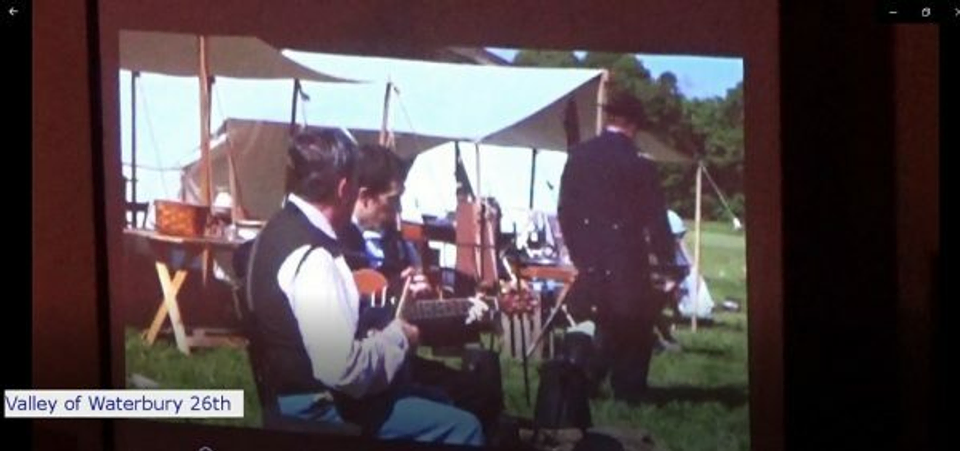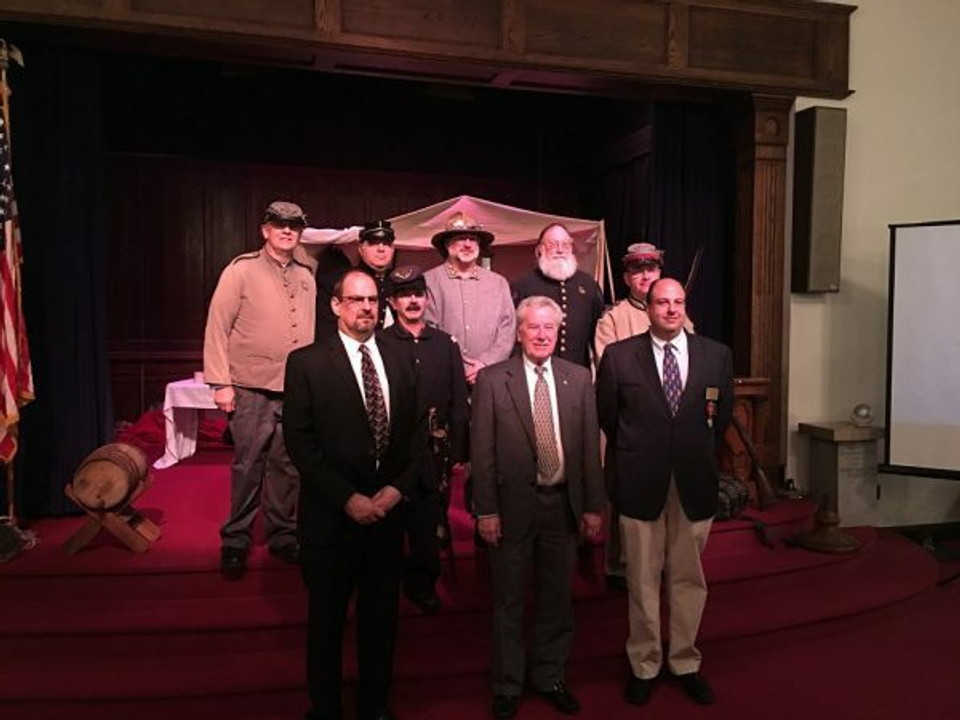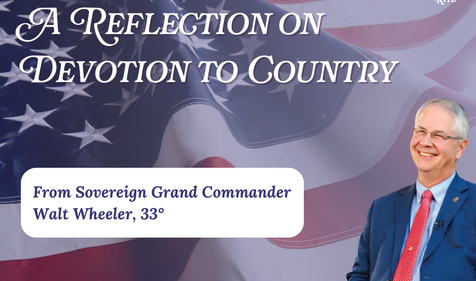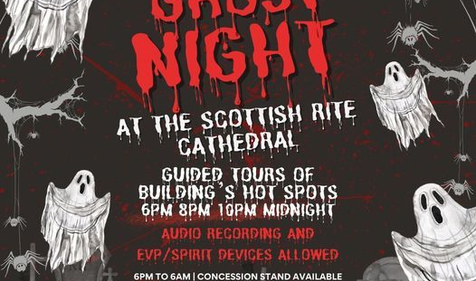The Valley of Waterbury recently performed a degree live with a cast while also using videos in certain parts to create an inspiring, enjoyable experience for their members. We sat down with them to learn more about how they successfully melded the two approaches to create the 26th degree.
Our Scottish Rite degrees are central to the member experience. It’s how we convey our six core values and come together in fellowship to teach our Brothers the lessons of moral purpose. Our degrees come from rich, historical backgrounds that feature many prominent characters throughout history.
While our degrees are usually either performed live with a cast of Scottish Rite Freemasons or are shown using our top-of-the-line degree videos, the Valley of Waterbury used a different approach. They performed a degree live with a cast while also using videos in certain parts to create an inspiring, enjoyable experience for their members. Scottish Rite, NMJ's Brennan Parken, 32°, Director of Membership, sat down with Past Sovereign Prince Bro. Hal Elwell, 32°, MSA and Valley Secretary Ill. Bro. Charles O’Neill, 33°, MSA from the Valley of Waterbury to discuss this “hybrid” degree experience.
Brennan Parken (BP): What made the Valley of Waterbury come up with a hybrid degree?
Brother Charles: We did a video presentation of the 26th degree and the Valley really enjoyed it. We have members who do Civil War reenactments and they wanted to do the degree live. They owned their own costumes, period flint locks and other paraphernalia, so we could make the stage look the part. But there was so much in the video presentation that we thought added to the feel of the degree, we started brainstorming how we could incorporate that into our live presentation. Hal Elwell was able to put together the “snip-its” that we wanted to use, such as the battlefield scene and others so that we could project those just at the right time. Which we think worked well.

BP: Tell us about the Valley of Waterbury’s “hybrid” approach to degrees
Brother Hal: Our general feeling is that most degrees are more meaningful when presented in person, by Brothers who are known to the audience. This helps new Brothers recognize that they too can become involved it the presentation of the degrees, and this participation is a way of engaging members, and strengthening their ties to the Scottish Rite. Some degrees, with large casts or intricate settings and effects, lend themselves to a mix of live actors and “multi-media” presentation, and these are most effective as hybrids.
BP: What do you think are the benefits of mixing live cast degrees and parts of the video degrees?
Brother Hal: As mentioned above, those in the cast enjoy the opportunity to present, and those in the audience feel more connected to the presentation.
Brother Charles: I also feel that the audience received the best of both, good ritual from live performance enhanced by the multimedia presentation.
BP: What do you think the new member gains from performing degrees like these?
Brother Hal: As a new member participates in the presentation of degrees, either in the cast or in a support or technical role, he becomes more familiar with the degree and the lessons it exemplifies.
BP: What are the Valley of Waterbury’s favorite degree to perform?
Brother Hal: At this point, the only hybrid degree that we have developed is the 26th degree, so by default it is our favorite. Among the non-hybrid degrees that we enjoy are the 6th, 7th, 8th, and 13th from the lodge; 16th of the council; and both chapter degrees. Some of these might work well as hybrids.
BP: In your opinion, what degrees do you think work best in this format?
Brother Hal: The hybrid is useful when elaborate settings are needed, such as showing a Civil War battlefield in the 26th
or when special effects might be needed, such as fire from the sky or crawling serpents.
Brother Charles: I would agree with Hal, especially when we have done the 6th degree in the past, we have not come up with a “good” presentation for the snakes in that degree.
BP: If a Valley wanted to try performing a hybrid degree, what are your tips and tricks to success?
Brother Hal: As with most things, planning is essential, as is preparation. See what members are interested in taking on the technical responsibility of “hybridizing” a degree. Pick one with which there is some familiarity and decide how the performance might be enhanced through the use of additional lighting, audio, or video effects. Realize there will be trial and error, with adjustments made until you are satisfied.
Brother Charles: I must agree with Hal, he did an amazing job “rewriting” the script to make sure that the live actors knew when the video was coming on, when to start back on stage with the live action. It all comes down to being familiar with the degree, the video, and getting good cast directions and lots of rehearsals.
BP: Thank you for your time and thank you to the Brothers of the Valley of Waterbury for their hard work!

Valley Leaders who want to learn more about developing hybrid degrees can contact Brother Hal for more information via email at Elwell.[email protected].
Related Stories
Discover additional Scottish Rite blogs and news on this topic.
-
A Reflection on Devotion to Country from Sovereign Grand Commander Walt Wheeler, 33°
Leadership
Read More about A Reflection on Devotion to Country from Sovereign Grand Commander Walt Wheeler, 33°
-
Illustrious Brother Thomas N. Moe Awarded the Gourgas Medal for Exemplary Service to Freemasonry and Humanity
News
Read More about Illustrious Brother Thomas N. Moe Awarded the Gourgas Medal for Exemplary Service to Freemasonry and Humanity
-
Valley of New Castle Finds Non-Traditional Way to Raise Funds
Inspiration
Read More about Valley of New Castle Finds Non-Traditional Way to Raise Funds



